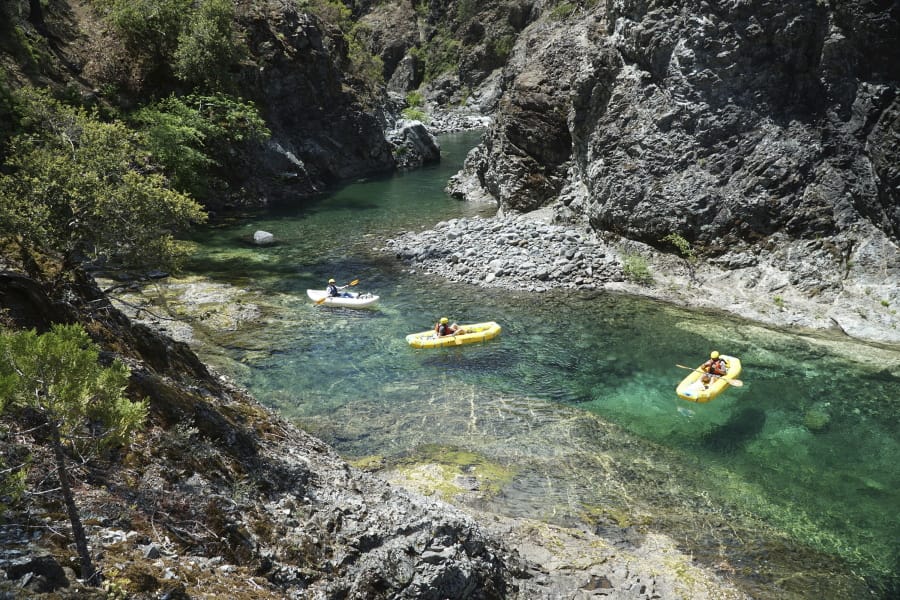MEDFORD, Ore. — When Zach Collier paddled down the cool and clear upper Chetco River earlier this month, he couldn’t help but think back to events five decades ago that helped put him there.
Men in suits on the East Coast who were worried about the river-damming era of their time pushed for a law that would protect wild streams and their banks for future generations.
“Future generations,” says Collier, a 44-year-old rafting and kayaking guide and outfitter. “I get goosebumps every time I read that. That’s us.”
The National Wild and Scenic Rivers Act turns 50 this year, and Collier is helping pay homage to the law by systematically researching and personally experiencing each of Oregon’s 58 river reaches protected by that act.
The Wild and Scenic Section of the Rogue downstream of Rainie Falls is one of the eight original rivers protected under the act that now covers 203 river designations, including a second one on the far upper Rogue in the Union Creek region.
Oregon has the most streams protected under the 1968 act, thanks largely to 40 designations championed in 1988 by former Sen. Mark Hatfield, who earlier helped shepherd funding to complete Lost Creek and Applegate dams in the Rogue River Basin and attempted to complete Elk Creek Dam, which was later abandoned and demolished a decade ago.
The designation means the rivers must be protected as free-flowing and managed to preserve natural, cultural and recreational values. The protections extend a quarter-mile from each bank, but not the river’s source or other aspects of it outside the designated boundaries.
Southern Oregon contains the largest concentration of Wild and Scenic rivers in the lower 48 states, and the Rogue Basin is well represented in the three designations of the act — Wild, Scenic and Recreation.
Wild rivers are largely primitive and generally inaccessible other than by water or trail, while Scenic rivers are similar but accessible in places by roads. Recreation rivers are readily accessible, have some shoreline development and may have housed dams in the past.
In all, Oregon’s Wild and Scenic rivers stretch more than 1,916 miles, or 2 percent of Oregon’s nearly 111,000 miles of river, according to the U.S. Forest Service.
Some, like the lower Rogue Canyon stretch and the upper Chetco, Collier runs regularly either for pleasure or for his Hood River-based Northwest Rafting Company. But the quest to visit all of Oregon’s Wild and Scenic stretches began last year with Collier “not really knowing how hard that would be,” he says.
Some, like the North Fork of the John Day River or the Minam River in the Wallowa Mountains, take more planning and preparation for what amounts to multiple-day floats through technical water.
“We could just go visit them and check them off the list,” Collier says. “But they deserve to be done the right way.”
Some are not floatable, such as the River Styx that flows underground in Oregon Caves near Cave Junction.
So far he’s hit 41 of them, and he hopes to get through 50 by the end of the year.
Collier and others on these expeditions are chronicling their journeys and experiences at www.oregonwildandscenic.com, “like a portfolio of what we’ve visited,” he says.
Among all the truly remote Wild and Scenic rivers in Oregon, however, one continues to stand out to Collier.
“I’m really partial to the Chetco,” Collier says. “To me, it’s the epitome of a Wild and Scenic river. It’s wild, clear and untouched. It’s mentally and physically exhausting. It’s the Chetco.”




